*Prohibited in Michigan
Overview
Red swamp crayfish are considered invasive in Michigan because they compete aggressively with native crayfish species for food and habitat. They feed on plants, insects, snails, juvenile fish and other crayfish, disrupting the food chain for many aquatic species.
Native to the Gulf of Mexico coast and the Mississippi River drainage system, they have spread to other U.S. waters probably through the release of live study specimens by teachers and students, by aquarists as pets, and by consumers who purchased them from live food markets or for bait fishing. They are widely available in the U.S. through the seafood industry and aquarium trade. While they usually spread along connected waterways, Red swamp crayfish can survive drought conditions and are known to migrate as much as approximately 2 miles over land in search of habitat.
They are very fertile, with females laying up to 600 eggs at a time and reproducing up to two times in a year.
Eradicating Red Swamp crayfish is nearly impossible because they are found in all types of freshwater ecosystems and dig chimney-like burrows into the bottoms of lakes, ponds, and rivers. Red swamp crayfish are a serious concern because of their ability to damage earthen structure. They are known to dig deep burrows near lakes and rivers and can spread quickly over land. Burrows, which can be more than 3 feet deep, can cause damage (through bank destabilization) to infrastructure such as dams, levees, irrigation systems and personal property.
In July 2017, the Michigan Department of Natural Resources confirmed the presence of invasive red swamp crayfish (Procambarus clarkii) in Sunset Lake in Vicksburg, south of Kalamazoo (Kalamazoo County), and in a retention pond off Haggerty Road in Novi (Oakland County).
Table of Contents
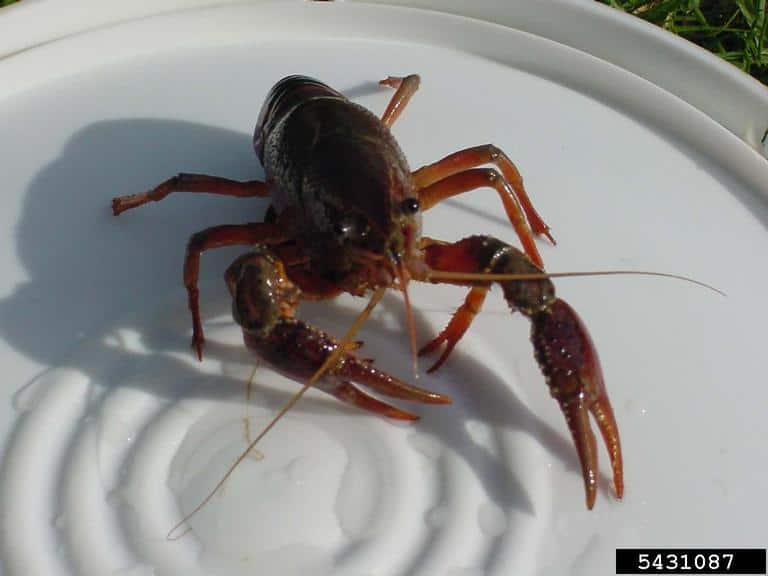
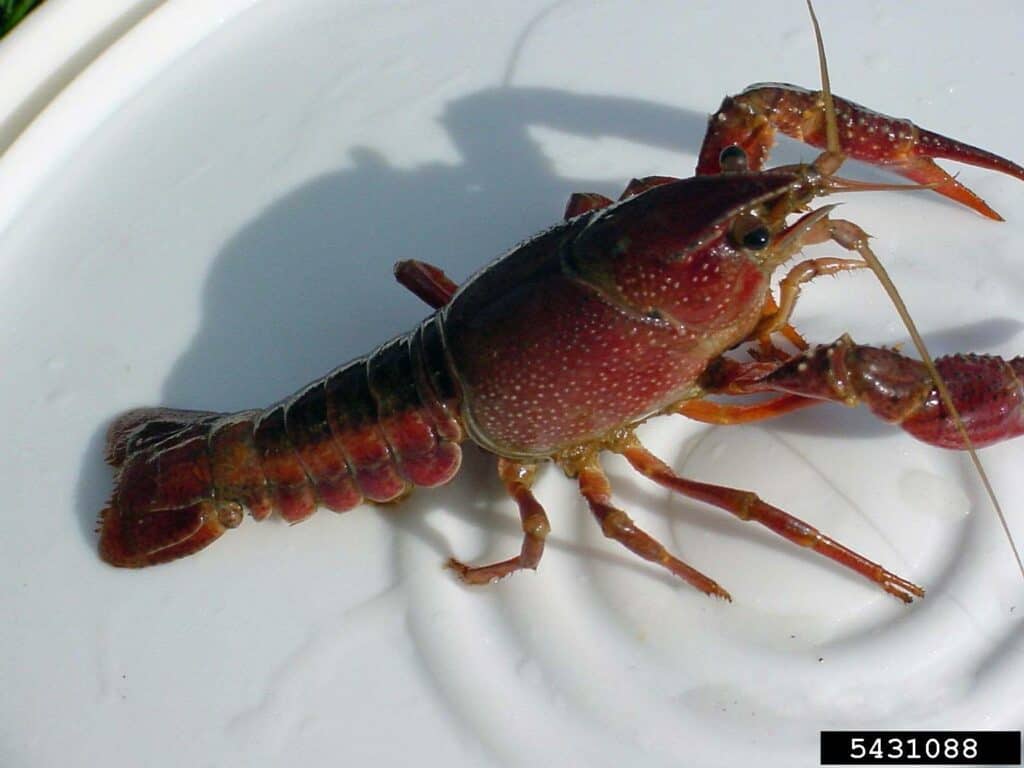
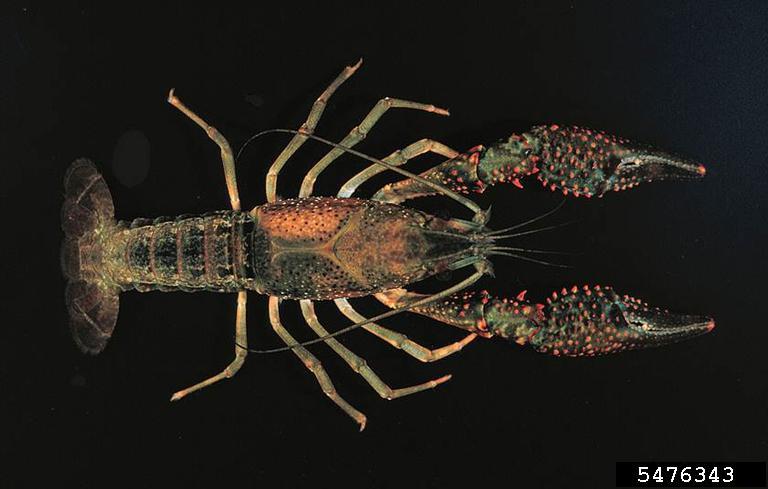
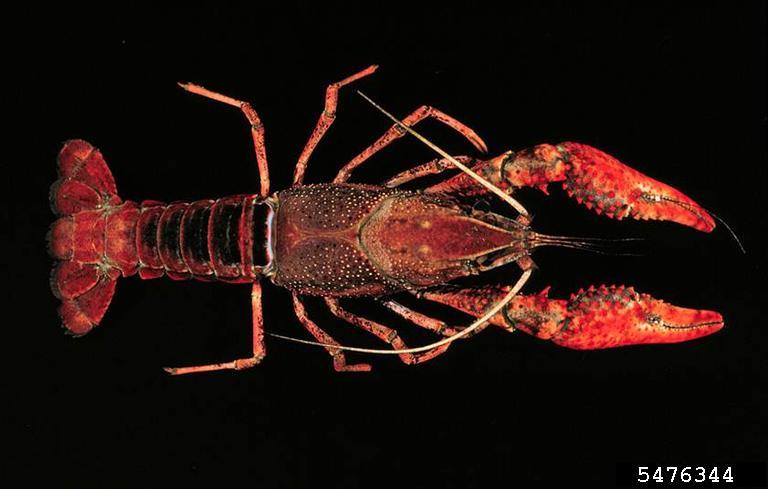
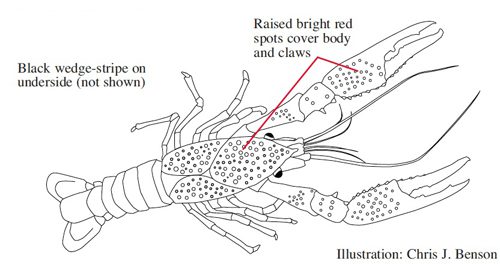
Identifying Red Swamp Crayfish
Red swamp crayfish look similar to native crayfish. They are dark red in color with raised bright red spots covering the body and claws and have a black wedge-shaped stripe on top of the abdomen. They vary in length between 2 to 5 inches. Occasionally, a genetic mutation may turn the body and/or claws blue, however all other features including the red raised spots remain the same.
- Learn to identify Red Swamp Crayfish.
- Never release any aquarium pets into the wild. Dispose of unwanted crayfish in the trash.
- Never dump live crayfish from one body of water into another.
- Inspect and remove aquatic plants and animals from boat, motor, equipment, and trailer.
- Drain lake or river water from live well and bilge before leaving access.
- Report sightings of Red Swamp Crayfish to Tip of the Mitt Watershed Council by calling (231) 347-1181 or by e-mailing us at info@watershedcouncil.org. Be sure to record your exact location, collection date, approximate density and size of infestation, and if possible, take a photograph (a cell phone comes in handy for this purpose).
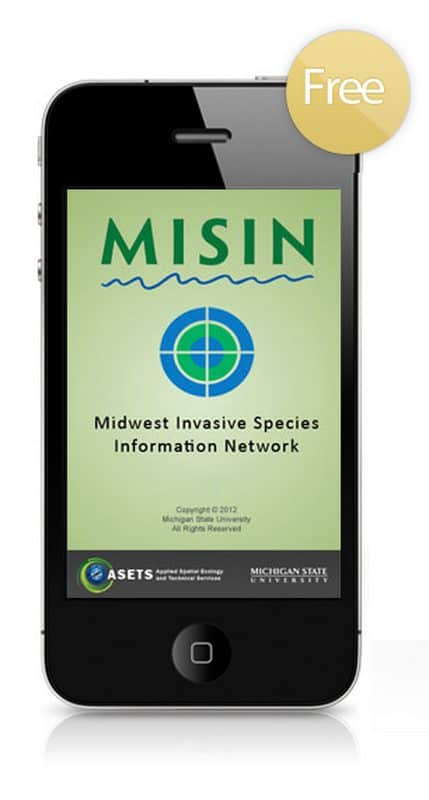
Reporting Invasive Species – FREE APP The MISIN smartphone app provides a mobile solution for the capture of invasive species field observation data. You can play an important role in the early detection and rapid response to new invasive threats in your area by contributing invasive species observations to the MISIN database.
|



